- Home
- Larry McMurtry
The Colonel and Little Missie Page 3
The Colonel and Little Missie Read online
Page 3
Several times, in writing about the West, I’ve mentioned the big point that was perhaps best elucidated by the William Goetzmanns, father and son, in their seminal study The West of the Imagination. The point is that in the Eastern settled parts of America there was an immediate and an insatiable hunger for images of and information about the West. The hundreds of dime novels featuring Buffalo Bill are a case in point; but the visual artists, in this case, got there before the writers. Artists began to flock into the high West as soon as there was steamboat travel on the Missouri River—that is, in the 1830s. George Catlin, Karl Bodmer, and Alfred Jacob Miller were the most prominent of the first generation of artists to penetrate the inner West. Plenty of others followed in their tracks or made tracks of their own. As the technical means for reproducing works of art—the works of art in the age of mechanical reproduction that the critic Walter Benjamin wrote about—improved, images of the West soon filled the magazines or hung, as prints, on walls in the East.
Those distant, romantic figures—the mountain men—may have been the first targets of Eastern fantasy. By the 1840s there were already proto–dime novels—short prose novelettes—featuring Kit Carson, Jim Bridger, and other mountain trappers. Kit Carson, the man, was once trying to rescue a white captive, Mrs. James White, from some Apaches; he caught up with the group that had Mrs. White and might have saved her had his commanding officer not refused to let him charge. The officer thought the Apaches might want to parley; they didn’t. Here is Kit Carson’s description of what happened next:
There was only one Indian in camp, he running into the river hard by was shot. In about two hundred yards the body of Mrs White was found, perfectly warm, had not been killed more than five minutes, shot through the heart with an arrow . . .
In the camp was found a book, the first of the kind that I had ever seen, in which I was made a great hero, slaying Indians by the hundreds and I have often thought that Mrs White would read the same and knowing that I lived near, she would pray for my appearance and that she might be saved. I did come but I had not the power to convince those that were in command over me to pursue my plan for her rescue.
It was a moment when Western reality and Western fantasy smacked together with a force that Kit Carson would never forget. Except for his wife, Josefa, Mrs. James White is the only woman mentioned in the short autobiography he dictated near the end of his life.
Bill Cody got to Fort Laramie—then the center of social life on the plains—in time to meet Carson, Bridger, and others of the mountain men, the first white explorers of the inner spaces of the American West. He so admired the meticulous Carson that he named his only son Kit Carson Cody.
7
TIMING counts for much in the development of public careers, including careers in show business. Most of Buffalo Bill’s actual Indian fighting was a matter of small-scale skirmishes which took place in the 1860s and 1870s. Cody actually won the Congressional Medal of Honor for a skirmish that involved eleven Indians, though it should be noted that Indians seldom traveled in large groups and eleven Indians could be plenty deadly. (In 1916 the honor was rescinded because Cody was not a member of the army at the time of the fight—he was often only a member of the army in a loose, informal way.)
Considering that he was well on his way to becoming a showman, what these skirmishes with Indians brought him was excellent publicity. Whether Cody actually killed Tall Bull or Yellow Hair is a matter we will discuss later. Indeed, a little farther along in his career, by hiring Indians, paying them adequately, and getting them off their unhealthy reservations, he not only helped but probably saved far more Indians than he was supposed to have killed. It is likely that real Indian killers, such as George Armstrong Custer, never took Cody seriously as a fighter; some of the Indians he is supposed to have fought probably felt the same way.
What Custer actually thought about Cody is not easy to determine. In 1866 and 1867 Cody worked mainly as a guide, in which capacity he was respected and trusted by a number of military men. In 1867 Cody did once guide Custer on a fairly short (sixty-five-mile) trip from Fort Hays to Fort Larned in Kansas. Custer was at first annoyed that Cody chose to ride a mule rather than a horse, but the mule soon proved his mettle. Cody said that Custer offered him employment anytime, but for whatever reason, the offer was never taken up and Cody is not mentioned in Custer’s autobiography.
The two were thrown together at least one other time, at the big buffalo hunt which Cody organized for Grand Duke Alexis of Russia. Cody did not scout for Custer at the Battle of the Washita (1868), though he was nearby and the battle occurred in country he knew well. Probably Custer just considered Cody a fop. After Custer’s death, at the Little Bighorn, Cody was on friendly terms with Custer’s lively widow, Libbie, who was his guest at some of Cody’s more hifalutin, or at least more metropolitan, Wild West shows.
As I mentioned at the beginning of this chapter, timing is important in any career, and Bill Cody’s timing was almost perfect. He first dipped his toe in show business in 1872, while still keeping a firm footing in his career as a scout and guide. From about that time on his scouting gradually decreased—he shifted a little and began to organize hunts for rich men, little safaris which gave them at least a taste of the Wild West.
But for big occasions, such as the search for Custer’s killers in 1876, Cody was immediately back in the West and part of the hunt. It was then that the famous “duel” with Yellow Hair (in Cheyenne Wey-o-hei) occurred. This duel became one of the central tropes of Cody’s career, endlessly reprised in the Wild West shows and, finally, even in a movie. This trope will be examined in more detail later.
Whether Cody killed Yellow Hair or not, he did scalp him and at once sent the scalp, plus Yellow Hair’s warbonnet and weapons, to Lulu, then living in Buffalo. Cody was hoping she could get a local department store to display them—good publicity for a play he was about to put on in that same city. Somewhat to Cody’s surprise, Lulu was not pleased by these grisly trophies.
Cody’s encounter with Yellow Hair (often mistranslated, even by Cody, as Yellow Hand) took place only three weeks after Custer and the Seventh Cavalry were wiped out at the Little Bighorn. Cody, in scalping Yellow Hair, claimed the “first scalp for Custer,” which got him huge publicity. (It may not have been quite the only scalp for Custer, but it was one of few—the warriors who fought at the Little Bighorn immediately melted away.)
In the publicity story after the duel with Yellow Hair, Cody was briefly a national hero—it was at this favorable moment that he moved definitively into show business.
Cody was no fool. He knew that where the Plains Indians were concerned, hostilities were nearly over. Sitting Bull had gone to Canada. Crazy Horse held out until May of 1877 and there were a few other resisters, but the Plains Indian wars were all but finished. If he wanted to remain an Indian fighter his best option would have been to accompany General George Crook—the Gray Fox—to the Southwest, where he might have helped the general try to catch Geronimo.
This prospect hardly enticed. Custer was bloodthirsty, Cody was not. In later days, when asked how many Indians he had killed, Cody always said that he never killed any Indians unless he felt that his life was in immediate jeopardy. As it happened, the year of the Little Bighorn turned out to be a terribly unhappy year for Cody anyway—it was the year his beloved son, Kit Carson Cody, died of scarlet fever. Cody could not even be there at the end—he was performing in the East at the time. Cody grieved over this loss for the rest of his life. When the sharpshooter Johnny Baker came along, Cody more or less adopted him, but it did not make up for the loss of his son.
8
CODY first trod the boards in a somber melodrama called The Prairie Scout, directed—if one could call it that—by Ned Buntline, whose real name was Edward Zane Carroll Judson. Cody’s fellow scout Texas Jack Omohundro also appeared with him. Realism was not increased by the use of red flannel scalps. The run—after many interruptions—eventually ended in Port Jer
vis, New York, and earned Cody a mere $6,000. He considered it very measly pay. At first he felt that Buntline and Omohundro had conspired to cheat him. Indeed, he felt so strongly about the matter that he never performed with Buntline again, though he was soon back on good terms with Texas Jack. Cody and Buntline eventually repaired their friendship but stayed clear of one another professionally.
Before turning in detail to Cody’s career as actor and impresario, I should mention the brief period when he served as a kind of white hunter, taking rich and important people on carefully managed buffalo hunts. The one held for Grand Duke Alexis got the most publicity, but an earlier hunt organized for General Phil Sheridan and some of his cronies was, if anything, done on a more lavish scale. I mention this here because it illustrates an essential aspect of Cody’s celebrity: he was always presentable, and rich people immediately felt comfortable with him. General Henry E. Davies was on the Sheridan hunt and had this to say about Bill Cody:
At the camp we were introduced to the far-famed Buffalo Bill . . . we had all heard of him as destined to be our guide. William Cody, Esq. . . . was a mild, agreeable, well-mannered man, quiet and retiring in disposition though well-informed and always ready to talk well and earnestly on any subject of interest . . .
Tall and somewhat slight in figure, though possessed of great strength and iron endurance; straight and erect as an arrow, and with strikingly handsome features, he at once attracted to him all with whom he became acquainted and the better knowledge gained of him during the days he spent with our party increased the good impression he made upon his introduction.
General Davies was so impressed with Cody that he could hardly contain himself. Here is his description of Cody’s (well-studied) entrance into camp—an entrance that would in time be repeated in hundreds of arenas around the world:
The most striking feature of the whole was the figure of our friend Buffalo Bill Cody riding down from the fort to our camp, mounted on a snowy white horse. Dressed in a suit of light buckskin, trimmed along the seams with fringes of the same leather, his costume lighted by the crimson shirt worn under his open coat, a broad sombrero on his head and carrying his rifle lightly in his hand as his horse came forward toward us on an easy gallop, he realized to perfection the bold hunter and gallant sportsman of the plains.
Cody, from the beginning, was capable of making what we now call a fashion statement; here is his reflection on the same occasion:
I rose fresh and eager for the trip, and as it was a nobby and high-toned outfit which I was to accompany, I determined to put on a little style myself.
There we have the birth of the fringed jacket so popular with the lawyer Gerry Spence and others—many hundreds of such jackets can be seen in Western films, including some quite recent ones.
Cody liked General Davies’s description of him so much that he copied it into his autobiography as if it were his own. The point, though, was that “nobby and high-toned” people nearly always liked Bill Cody and felt immediately at ease in his company. From this point on he dressed with an eye to his entrance. He had even had a number of promotional photographs of himself in scout’s garb made—the photographer he used was Matthew Brady, famous for his photographs of Lincoln and of the Civil War. Once Cody decided that show business was to be his vocation, he left as little as possible to chance. Like most professional show people, he trained, and he improved.
9
AROUND 1880, with the Plains Indians finally subdued, it began to be clear to Cody that Prairie Scout–like melodramas had about had their day. Audiences would not come forever just to see stiff performers in buckskins. The notion of something rather more outdoorsy in the way of spectacle was in the air—something that might possibly involve a roper or two, or a little sharpshooting. If a few cowboys and some buffalo could be included, so much the better. Notions of this sort began to percolate in Cody’s mind, and in the minds of other protoimpresarios as well. The sharpshooter Doc Carver, whom Cody mostly feuded with but at one point attempted to partner with, had similar ideas. Perhaps they had heard of old P. T. Barnum and the herd of skinny buffalo that he used to have chased around Staten Island, mainly to promote the ferry business, of which he had a cut—this had occurred in 1843.
It was around this time that Cody met the man who was to help make his fortune, not once but many times: the actor and manager Nate Salsbury. It would be a few years, however, before the two men formally joined forces.
In one of Cody and Carver’s early team efforts an event was created in which skilled cowboys roped a buffalo, threw it, and then rode it. (It may be that this strange, short-lived event was the precursor of the now popular bull-riding events.) Most of the cowboys who worked this show were not exactly eager to apply their riding skills to buffalo, but they gave it their best, excepting only one huge buffalo named Monarch that no cowboy cared to attempt. A team of ropers did manage to catch and throw Monarch, but none of these gallants had any desire to try and ride the huge beast.
With a crowd to please, Cody, always confident of his riding skills, decided to ride Monarch himself. Buffalomanship, however, proved to be a much rougher sport than merely riding broncs. Cody made what in today’s terms would probably be a qualifying eight-second ride—but when Monarch finally threw him, Cody was so badly hurt that he had to be hospitalized for two weeks. Gordon Lillie, who, as Pawnee Bill, was later to be Cody’s rival before the two became partners, observed this dustup and learned from it. Neither man ever attempted to ride a buffalo again—the act was modified, the riding omitted. Pawnee Bill said later that the only time he saw Cody dead sober in his life was when he emerged from the hospital after having attempted to ride Monarch, the champion bucking buffalo.
I’ve mentioned earlier that many people loved Cody; what should be added is that almost everyone who met him, with the exception of a few professional rivals like Doc Carver, really liked him. He was not loath to promote himself, but he was not obsessive about it, either; many commentators remarked that he didn’t seem to take himself all that seriously. All agreed that he was generous to a fault. Even his wife, Lulu, who battled with him for four decades, admitted that he was probably the most generous man alive, and also, in her view, a great man. When Lulu went up to join him at the big Chicago Exposition in 1893 she arrived at their hotel only to find that a Mr. and Mrs. Cody were already registered—the other Mrs. Cody turned out to be the actress Katherine Clemmons, with whom Cody had a long and financially disastrous affair. It was Katherine Clemmons he was referring to when he said he had rather manage a million Indians than one soubrette.
The outraged Lulu, not unexpectedly, threw a considerable fit that day in Chicago—she was to throw many in the course of forty years with and without Bill Cody. But she didn’t go home unrewarded. Her generous husband, in hopes of making amends, presented her with the finest house in North Platte, Nebraska.
BOOK ONE
The Tropes
1
IT is not my intention in this book to attempt a straight birth-to-death biography of William F. Cody—or Annie Oakley—though some attention to their family histories is desirable, even though it doesn’t really explain how the two became world celebrities.
For Cody particularly a fresher approach would be to proceed through his career with reference mainly to what might be called the highlighted events—episodes or adventures that Cody retold or reenacted so many times that they took on the nature of tropes. The killing of Cody’s first Indian, at age eleven, is one such trope; the duel with Yellow Hair in 1876 is another example. These and perhaps a dozen other famous episodes from Cody’s life found their way over and over into dime novels, into melodramas, into his autobiography, into promotional materials, into general histories, and finally, into minidramas that were acted out in the Wild West performances. These episodes have become not so much history as folklore, and some of them are still being performed even now at Euro Disney.
A brilliant beginning in this approach to Cody’s ca
reer has been made by Joy S. Kasson, in her stimulating Buffalo Bill’s Wild West: Celebrity, Memory, and Popular History (2000), in which these same tropes are studied iconographically, through their evolution in visual forms: dime novel covers, book illustrations, and poster art. The Wild West shows needed hundreds of posters, reproduced in thousands of copies, to be put up ahead of the performance in order to bring out the crowds and prepare them for the glorious spectacle which awaited them. Some of the posters are brilliant works themselves, the originals of which are now much sought after by collectors.
It was Joy Kasson’s provocative book that first got me thinking about the Colonel and Little Missie; but in this study I would like to drive my wagon in the opposite direction: to proceed from the folklore and its pictorial underpinnings back to the historical event—when there is one—that underlies the folklore.
Some of the later tropes—Cody’s conquest of the English royal family, for example—have been, if anything, overdocumented. From the time Cody and his big troop disembarked at Gravesend (not far from where Pocahontas is buried) the press was out in force. Princess Alexandra liked the show so much that she once snuck into the press box incognito. (In the farcical divorce proceedings which Cody initiated against Lulu in 1905, both Princess Alexandra and her mother-in-law, Queen Victoria, were named by Lulu as women who had paid her husband very improper attentions, though it is well documented that the queen’s eye, at least, lingered longest on the handsome Ogalala Red Shirt, who is more than once mentioned in the royal diaries. To Cody himself the queen was merely polite.)
For the earliest and most complex tropes—what we might call the prairie tropes—there were at first no media reports at all, there being, as yet, no media in the areas where the events took place. Cody claimed to be eleven when he killed his first Indian, which would have put the event in 1857. Young Cody was a cowboy, or teamster, at the time, helping to move a herd of cattle across the plains. The first newspaper in Leavenworth, Kansas, was started about that time, but it seems unlikely that Cody would have been released from his duties to report the death of one Indian to a fledgling newspaper.

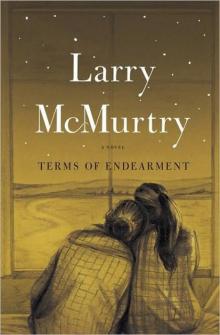 Terms of Endearment
Terms of Endearment Some Can Whistle
Some Can Whistle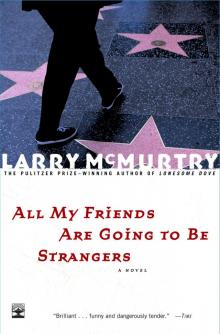 All My Friends Are Going to Be Strangers
All My Friends Are Going to Be Strangers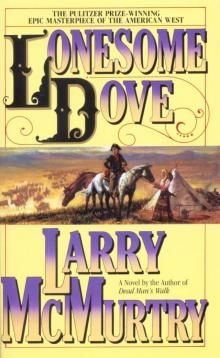 Lonesome Dove
Lonesome Dove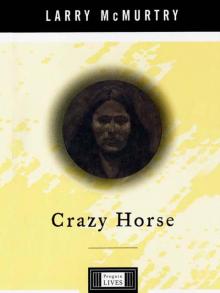 Crazy Horse: A Life
Crazy Horse: A Life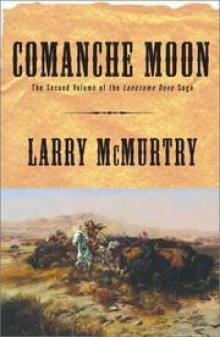 Comanche Moon
Comanche Moon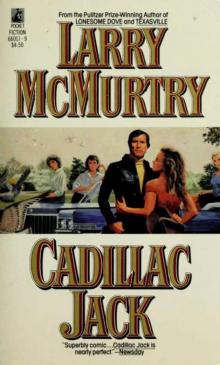 Cadillac Jack
Cadillac Jack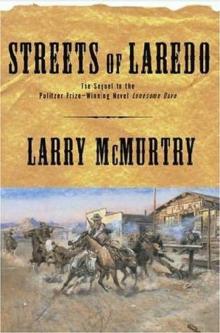 Streets of Laredo
Streets of Laredo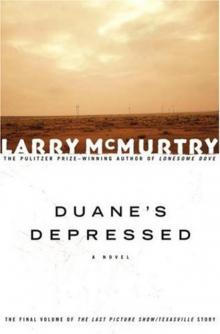 Duane's Depressed
Duane's Depressed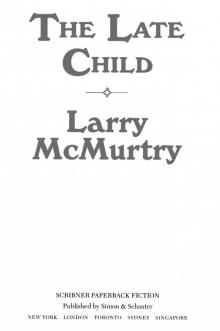 The Late Child
The Late Child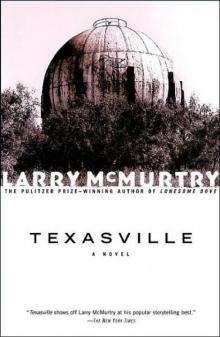 Texasville
Texasville Rhino Ranch
Rhino Ranch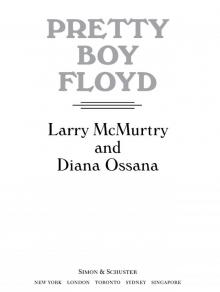 Pretty Boy Floyd
Pretty Boy Floyd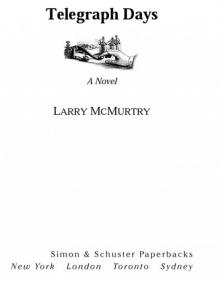 Telegraph Days
Telegraph Days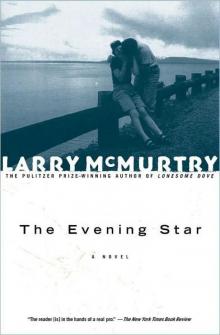 The Evening Star
The Evening Star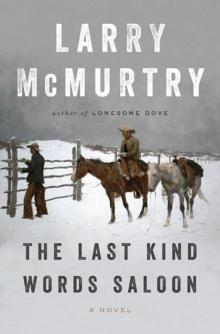 The Last Kind Words Saloon
The Last Kind Words Saloon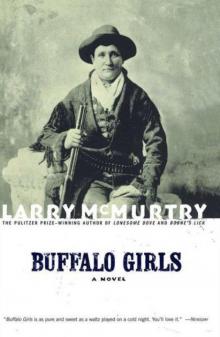 Buffalo Girls
Buffalo Girls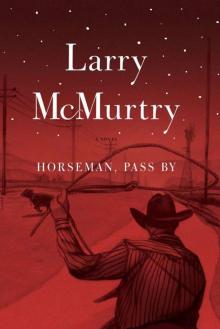 Horseman, Pass By
Horseman, Pass By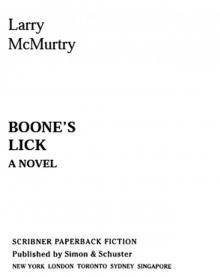 Boone's Lick
Boone's Lick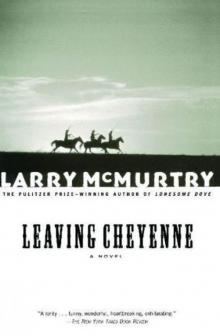 Leaving Cheyenne
Leaving Cheyenne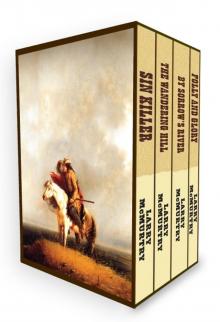 Sin Killer
Sin Killer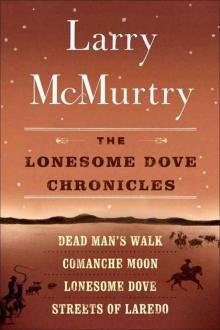 The Lonesome Dove Chronicles (1-4)
The Lonesome Dove Chronicles (1-4)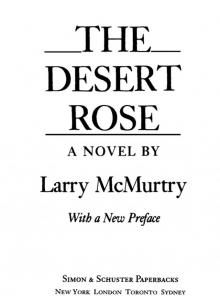 The Desert Rose
The Desert Rose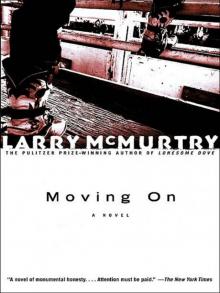 Moving On
Moving On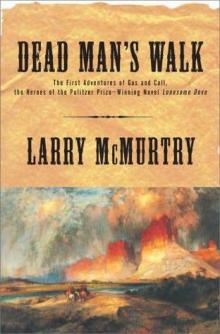 Dead Man's Walk
Dead Man's Walk The Last Picture Show
The Last Picture Show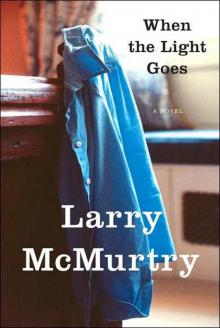 When the Light Goes
When the Light Goes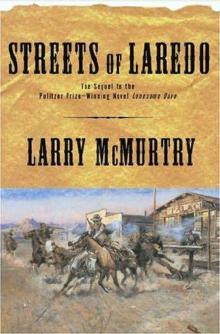 Streets Of Laredo ld-2
Streets Of Laredo ld-2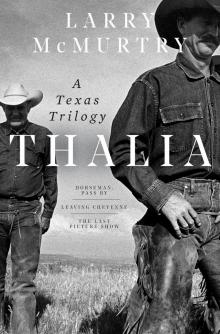 Thalia
Thalia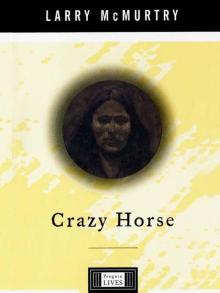 Crazy Horse
Crazy Horse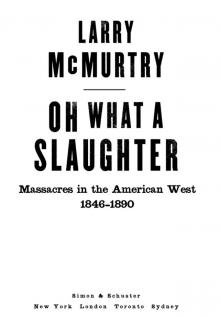 Oh What a Slaughter
Oh What a Slaughter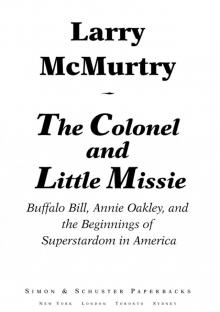 The Colonel and Little Missie
The Colonel and Little Missie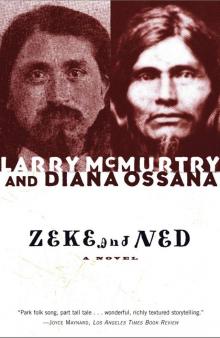 Zeke and Ned
Zeke and Ned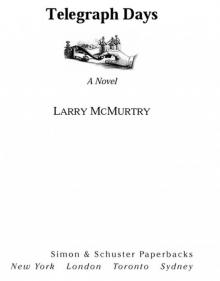 Telegraph Days: A Novel
Telegraph Days: A Novel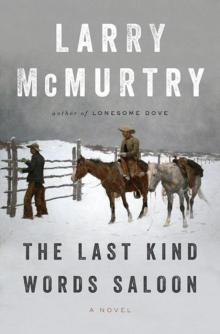 The Last Kind Words Saloon: A Novel
The Last Kind Words Saloon: A Novel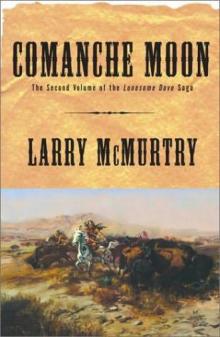 Comanche Moon ld-4
Comanche Moon ld-4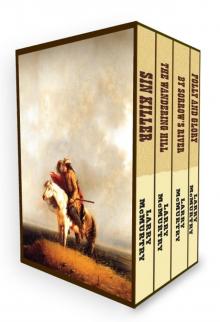 The Berrybender Narratives
The Berrybender Narratives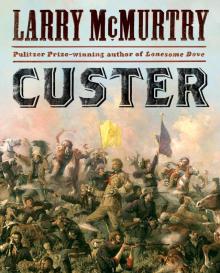 Custer
Custer